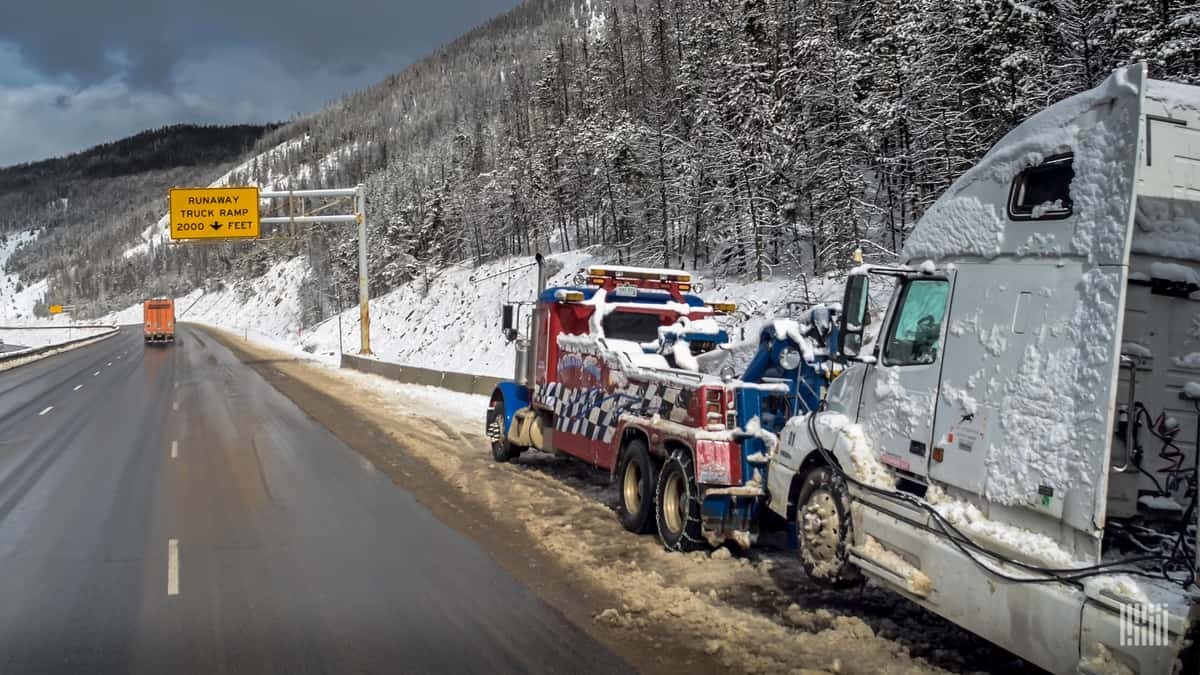Truck drivers experience a range of extreme weather across the United States. This is especially true for long-haul drivers who travel through several states on each trip. It’s not unusual for them to drive straight through a Rocky Mountain blizzard right into dry, windy plains on the same day. Bad weather for truckers can cause delays, major accidents, serious injuries or even death.
In a social media survey, FreightWaves asked truckers which hazardous weather type they thought was the worst to deal with on the job: freezing rain, heavy snowfall, high winds or fog. Here’s how they ranked, in descending order, and how drivers can deal with them as safely as possible.
Freezing rain
Freezing rain gets top billing, according to almost 63% of truckers who responded to the survey. It can be nearly impossible to keep control of a tractor-trailer once roads become icy.
Some drivers suggest keeping a gauge handy to monitor the outside temperature at all times. This allows them to see when the outside air temperature is dropping, and thus when rain may soon turn to ice.
When drivers see ice starting to form on their mirrors and/or windshields, or their gauge indicates that the outside temperature is dropping below freezing, they should get off the road as soon as possible.
It’s also important to find a safe place to exit and park until the weather improves. Road conditions during freezing rain are highly unpredictable, and truckers may run into patches of black ice. It’s better to pull over and wait it out rather than risk jackknifing.
Heavy snowfall
According to nearly 19% of truckers, heavy snowfall comes in a distant second as the most dangerous weather to handle. If the weather forecast predicts heavy snow, drivers should have tire chains on board. This is required by law in several states. If the weather turns really ugly, drivers must be prepared to get off the road to chain up for better traction. Typically, state transportation departments alert drivers via road signs when they must apply their chains.
When storms dump excessive amounts of snowfall, it can be days before snow plows are able to clear roads. In preparation for that possibility, drivers should be sure to fuel up before their trips. Truckers should also have plenty of warm clothing, hand warmers and some nonperishable foods on board.

Fog
Right behind heavy snowfall is fog, at almost 15%. Driving in fog has its own unique challenges for truckers. Often, fog can be thin and patchy and may not pose the serious hazard presented by a large, dense fog bank. The range of visibility in fog is the deciding factor. When visibility starts to decrease, it’s time for drivers to find a safe spot to land and turn on their flashers.
Pulling onto the shoulder of an off ramp is not recommended. But if this is a driver’s only choice, it’s better than the shoulder of the road if the situation is serious. If drivers stop on the shoulder in dense fog, their tail lights may confuse traffic behind their trucks.
High winds
Around 4% of drivers said high wind was the worst kind of weather to handle behind the wheel. Most truckers who have run into strong crosswinds on Interstate 80 in Wyoming would agree that those winds can be powerful enough to blow a truck off the road.
Dangerous crosswinds are common on wide-open interstate highways. In this situation, drivers should find a safe place to stop. This is especially true if their loads are exceptionally lightweight or if they’re deadheading (hauling an empty trailer).
If possible, drivers should head for a truck stop and find a parking spot between two trailers. This is a good way to stay protected from a windstorm.
Click here for more FreightWaves articles by Nick Austin.
5 of the worst weather states for truckers
America’s most dangerous roads for truckers
Vetting some of the best weather apps for truckers
